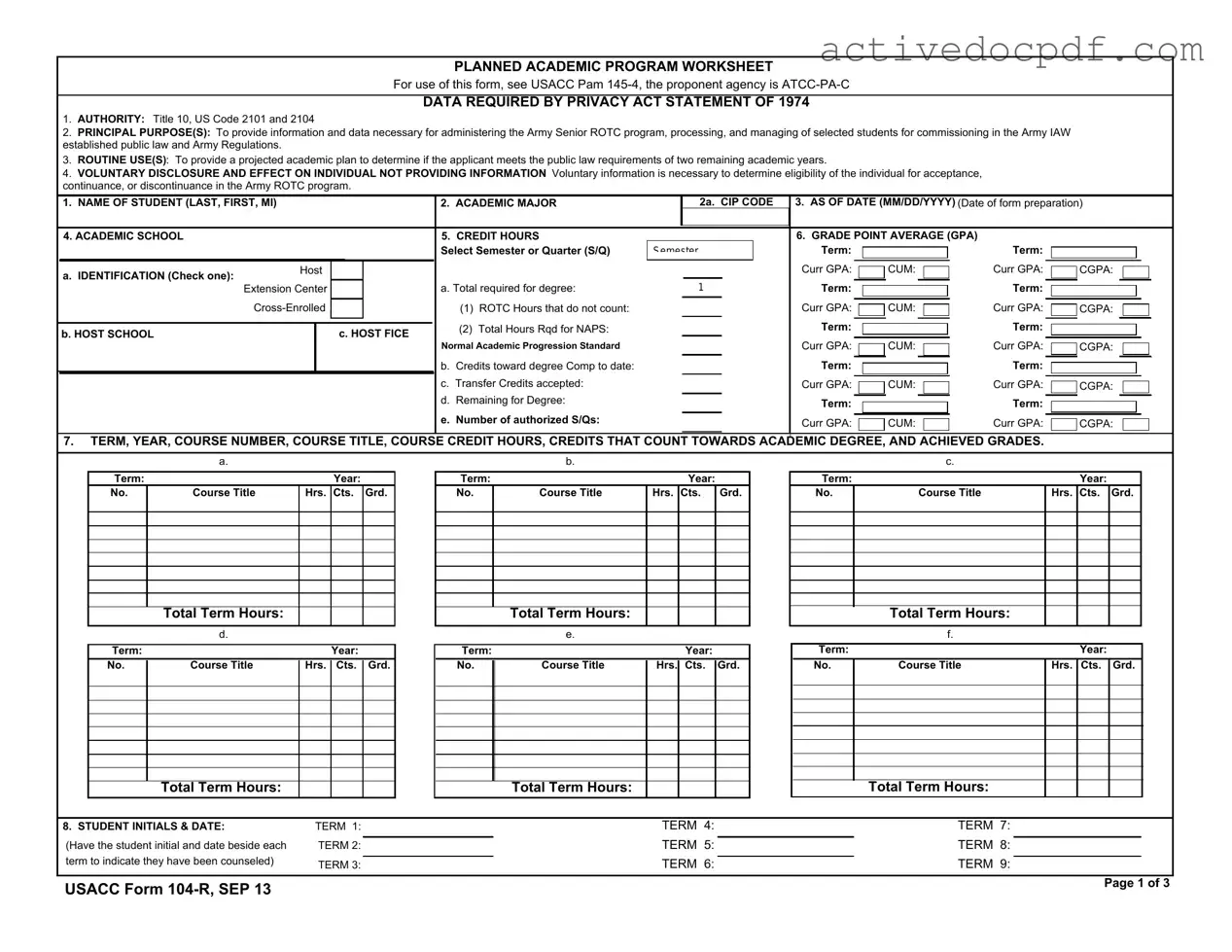Free 104 R PDF Form
The 104 R form is a Planned Academic Program Worksheet used in the Army Senior ROTC program. This form collects essential information to help determine a student's eligibility for commissioning in the Army. It outlines the academic plan required for the completion of a degree and ensures compliance with public law and Army regulations.
Edit Form Online
